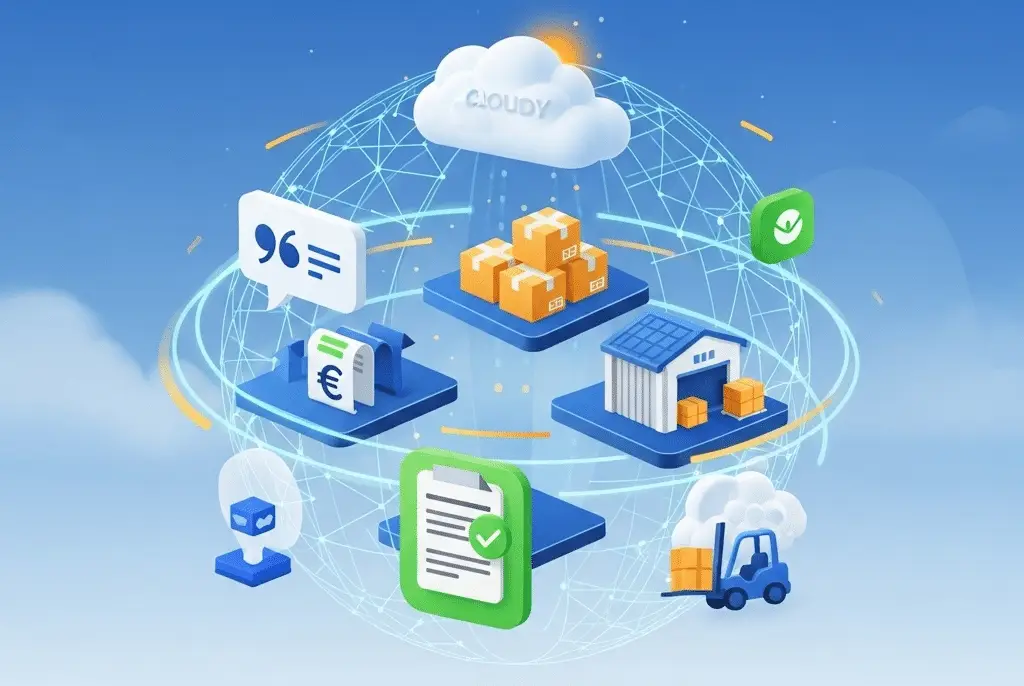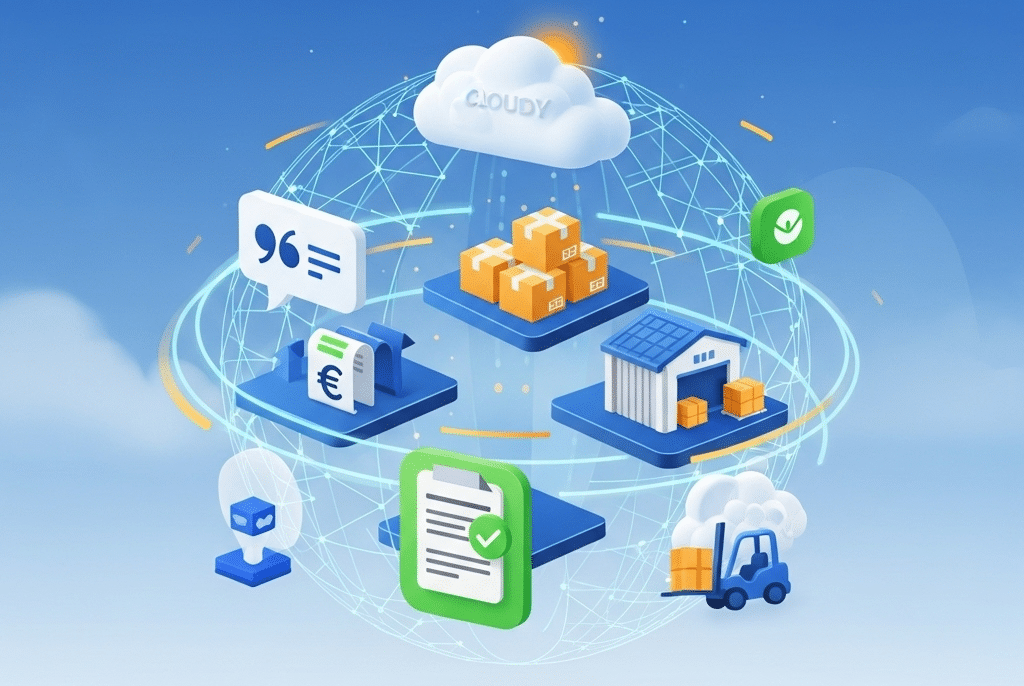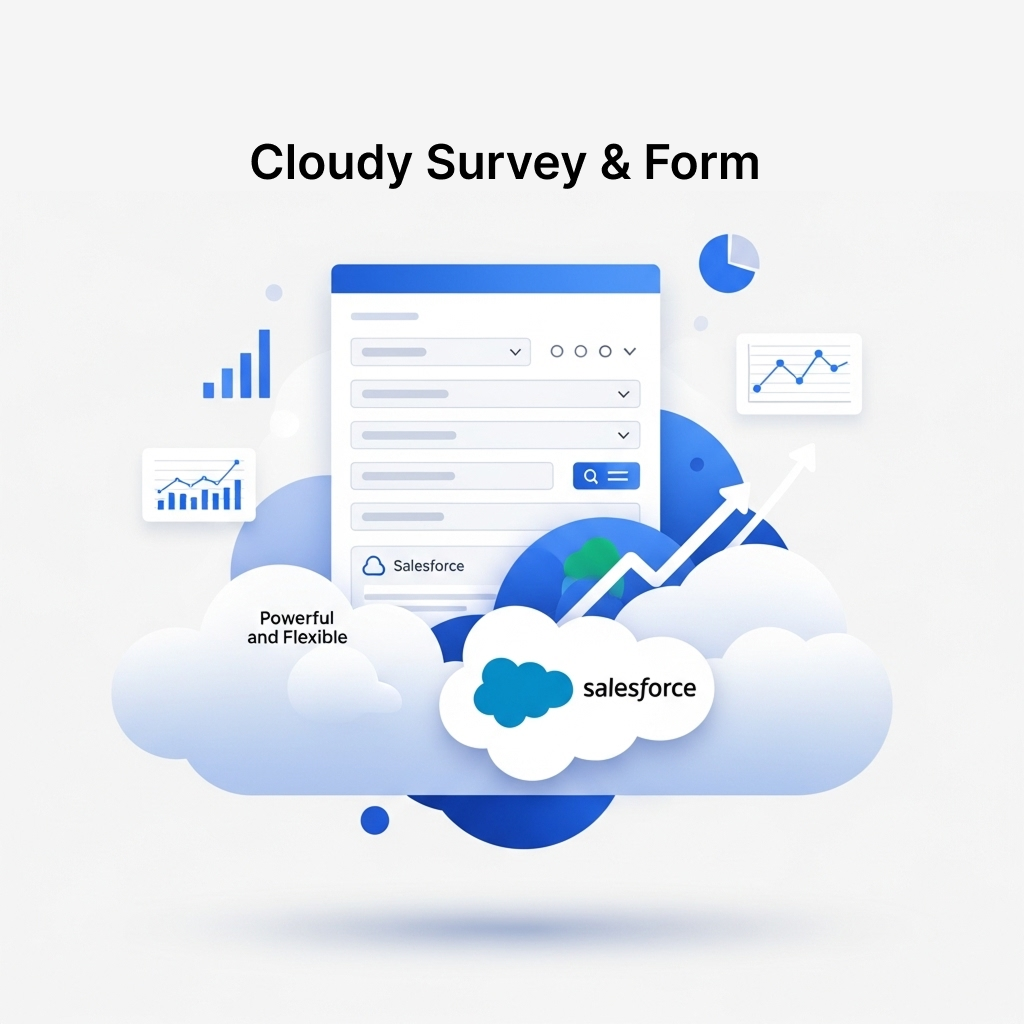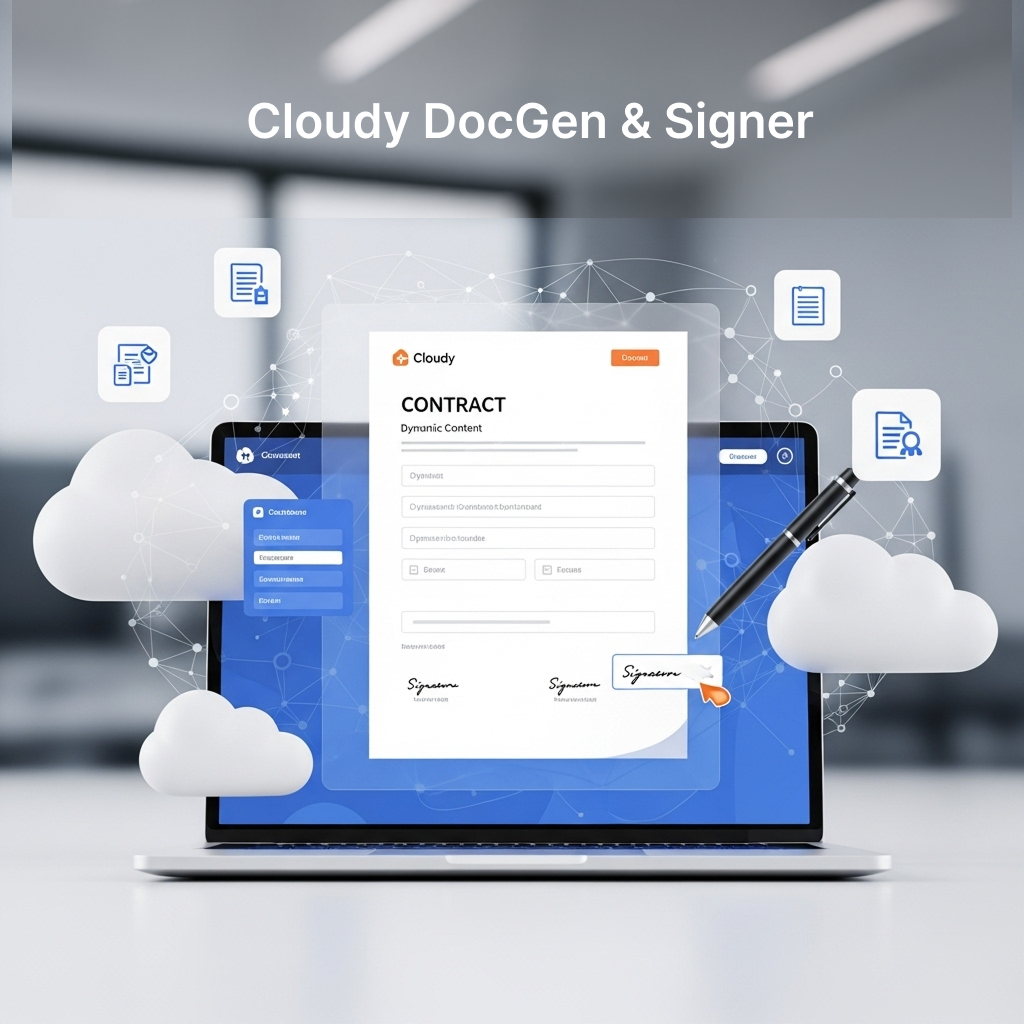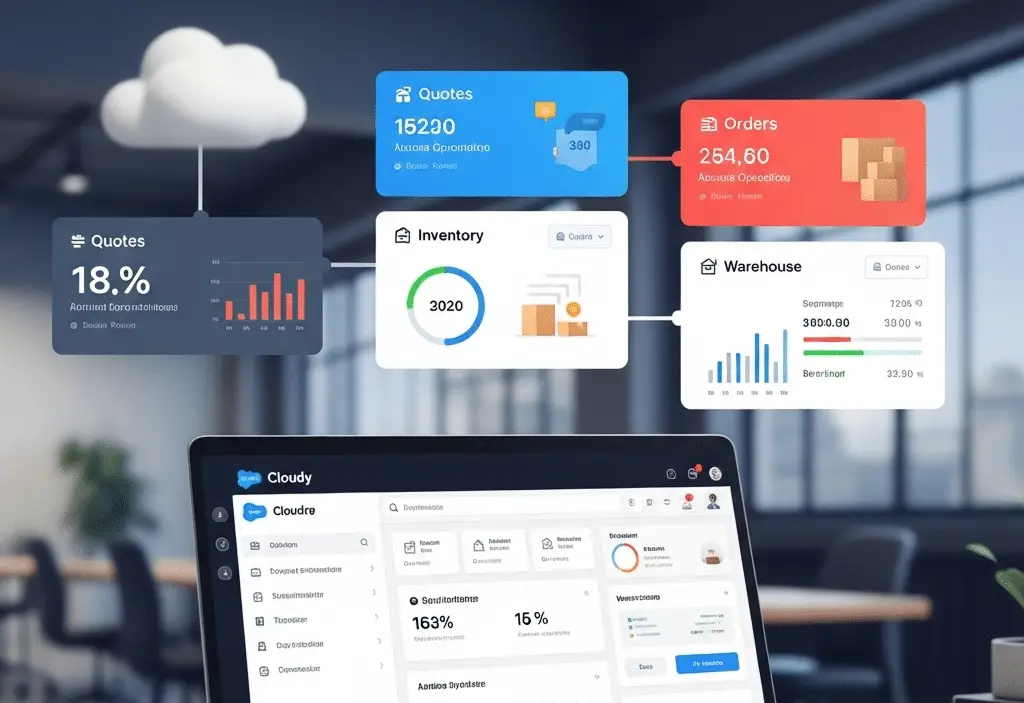
Cloudy Business Ops 360 Knowledge Base
The complete user guide for mastering quotes, inventory, orders, and warehouse operations.
Introduction
Cloudy Business Ops 360 is a customized Salesforce app designed to provide a one-stop solution for managing various aspects of quotes, inventory, orders, and warehouse operations efficiently.
Product Overview
Cloudy Business Ops 360 is built to streamline and optimize business processes, offering functionalities such as:
- Item and Inventory Management : Tracks items, item variants, and their attributes, including availability, reserved quantities, damaged items, and more.
- Multi-Currency Support: Facilitates transactions in different currencies and ensures compliance with international standards.
- Order and Fulfillment: Manages quotes, invoices, purchase orders, and sales orders, with support for tracking whether items are fulfilled or pending.
- Warehouse Management: Guides allocation of incoming shipments based on factors like volume and dimensions, with detailed bin utilization tracking.
- Taxation and Pricing: Handles complex tax rules through objects like Tax Rate, Tax Jurisdiction, and Tax Calculation Rule. It includes support for tax-inclusive pricing and regional adjustments.
- Discounts and Promotions : Implements a basic discount system with plans for future enhancements.
- Manufacturing and Logistics: Tracks production workflows, shipment tracking, and incoming logistics.
-
Advanced Features:
- Deferred Revenue and General Ledger (GL) impact tracking.
- Payment reconciliation for financial accuracy.
- Support for damaged inventory classification while keeping saleable inventory calculations updated.
- Dynamic Documents Generates PDFs for quotes, invoices, purchase orders, and sales orders.
Product Features
Real-Time Inventory Tracking
Refers to the process of continuously monitoring and managing inventory levels using technology. It provides businesses with real-time visibility into stock levels, item locations, and the movement of goods throughout the supply chain, ensuring that businesses have the most up-to-date information to make informed decisions.
Product Features
Warehouse Management
Warehouse management is all about keeping your warehouse running smoothly. It involves organizing, controlling, and optimizing everything from inventory and workflows to how space and resources are used—so goods are stored, moved, and tracked efficiently.
Getting Started
System Requirement
- Salesforce Edition : Enterprise, Unlimited, or Developer
- Salesforce Experience : Supports both Classic and Lightning Experience
- User Permissions : Salesforce System Administrator or AppExchange Download permissions
- Browser Compatibility : Latest versions of Chrome, Firefox, Microsoft Edge, and Safari.
.png)
.png)
.png)
.png)
Getting Started
Pre-Setup Requirement
This application needs to be configured after Business Ops 360 package installation and before the end user begins using it through the user interface (UI).
-
Search for the "Business Ops 360" in the app launchers search box.
.png)
Item
An Item represents a product or material that your business buys, sells, or tracks in the inventory system. Items form the foundation of your inventory management process — every purchase order, sales order, inventory adjustment, and shipment is tied back to an Item. In Cloudy Business Ops 360, Items can represent physical goods (e.g., laptops, spare parts), consumables (e.g., packaging material), or even services if you choose to track them.
Why is it Used?
The Item object is used to:
- Maintain a central product catalog for your business.
- Store key product data like SKU, dimensions, weight, and pricing.
- Control whether inventory is tracked for a product.
- Support pricing and taxation logic (purchase price, sell price, tax rate).
- Enable variants for items that come in multiple versions (e.g., size, color).
- Provide product visibility in quotes, orders, bills, and shipments.
Checkbox Functionality
Here’s what each checkbox on the Item object controls:
- Active? → Determines whether the item is available for use in transactions. Unchecking will hide it from orders and inventory processes.
- Enable Item Variants? → Allows you to create multiple variants (size, color, material) under one item. Useful for product families.
- Enable Legal Entity Items (Formula) → Automatically indicates if the item is available across multiple legal entities based on your setup.
- Exclude From Shipment → If checked, this item will not appear on outbound shipments (useful for services or virtual items).
- Hidden From Editors? → Hides the item from product selection dropdowns in editors to prevent accidental use.
- List Price Editable → Allows users to manually override the item’s list price on quotes, sales orders, or invoices.
- Quantity Editable → Allows users to override default quantity (e.g., in bundles or automated order processes).
- Returnable Item? → Marks the item as eligible for return processing (can be selected in sales return transactions).
- Tax Included in Price? → Indicates that the item’s sell price already includes tax (important for price calculation).
- Track Inventory? → When checked, inventory transactions (receipts, shipments, adjustments) will update stock levels automatically.
- Trade Discount Editable → Allows users to edit the trade discount for this item when creating quotes or orders.
- Vendor Tax Included in Price? → Specifies that the vendor’s purchase price already includes tax.
Best Practices
- Use a consistent SKU or Item Code across all systems to avoid duplication and errors.
- nable item variants only when necessary — too many variants can make inventory management complex.
- Attach product images and descriptions to make it easier for users to identify items.
- Keep dimensions, weight, and volume updated for accurate shipping calculations.
- Deactivate unused items instead of deleting them to preserve transaction history.
- Align purchase price and sell price updates with finance to ensure profitability is maintained.
Schedule a Free Consultation
×Download Company Deck
Thank You!
Your download will begin shortly.






